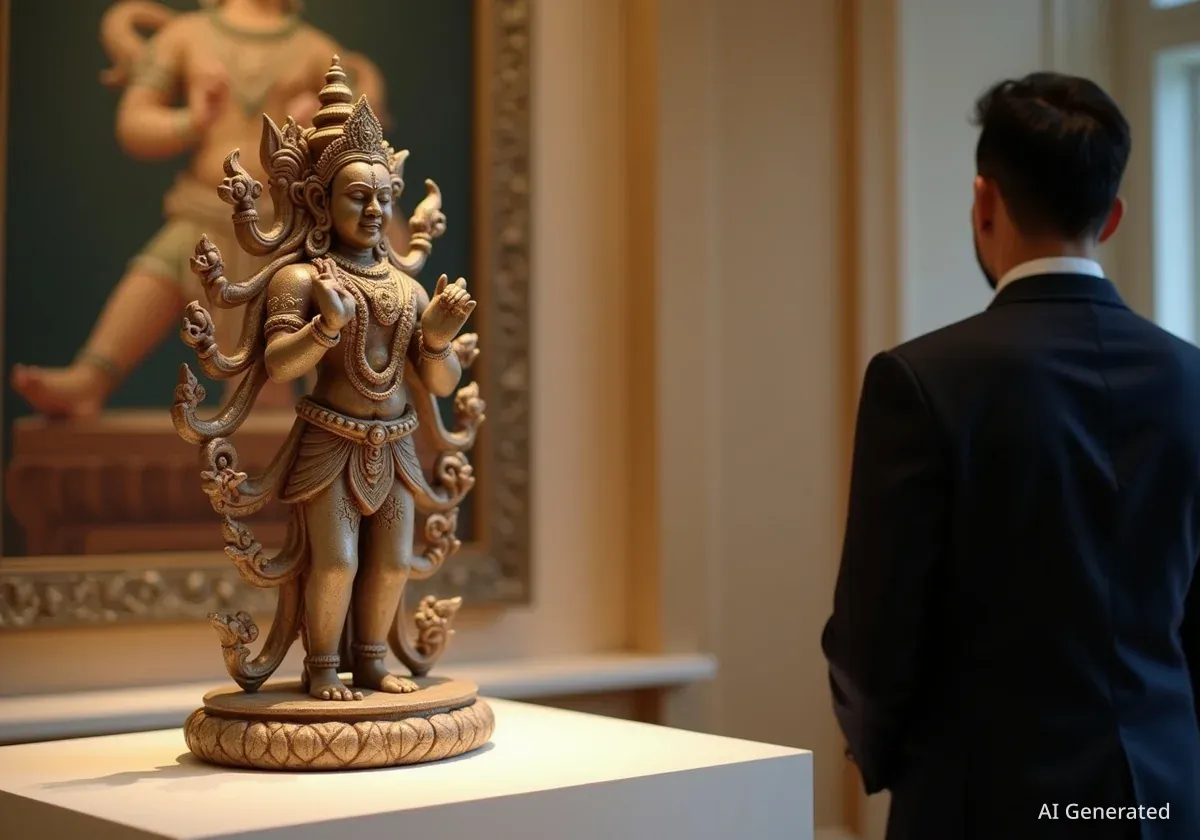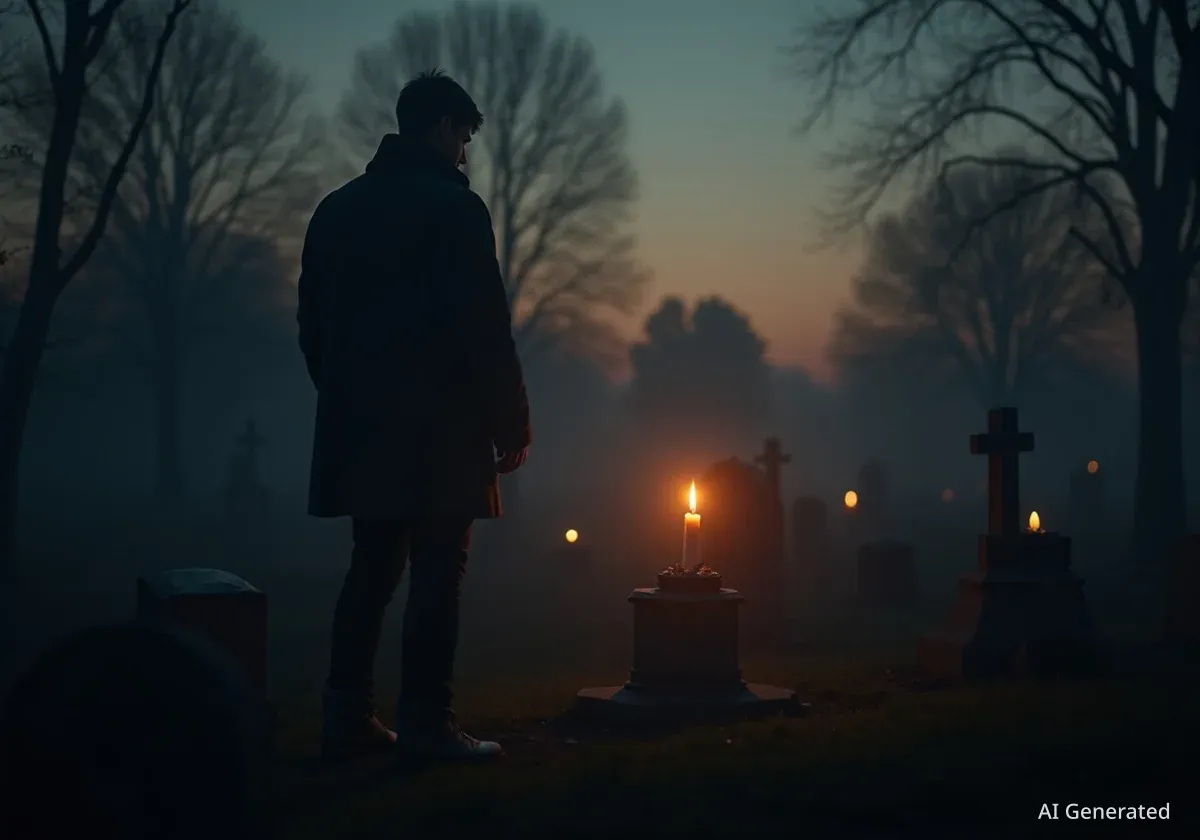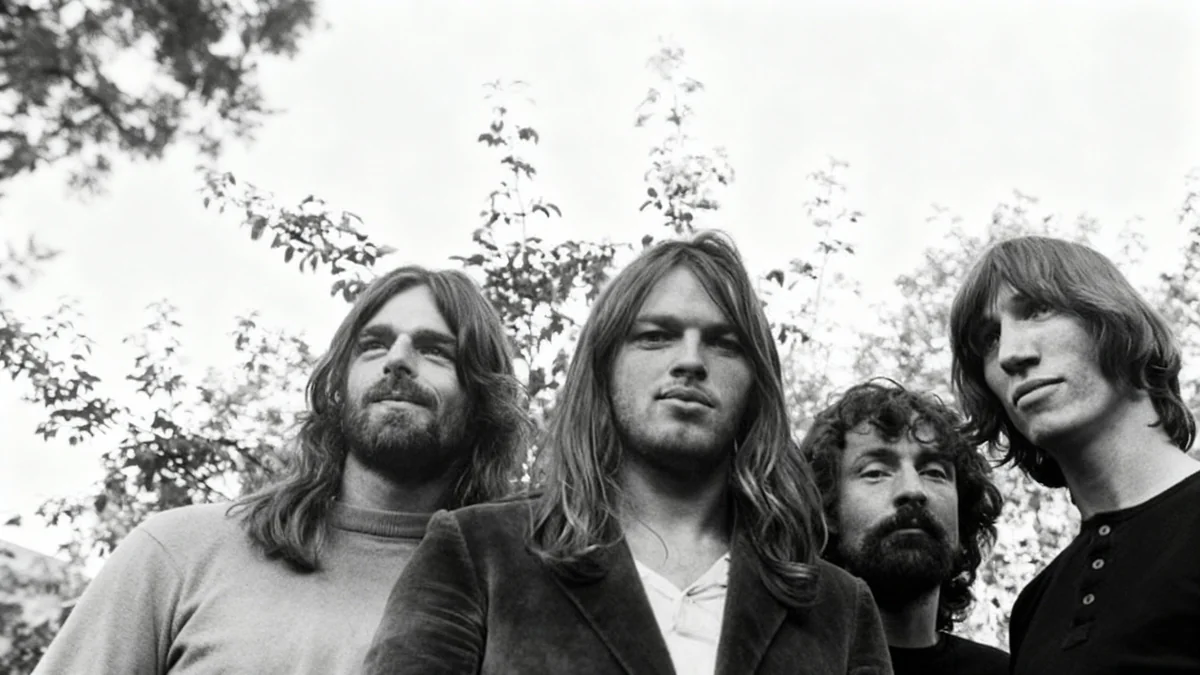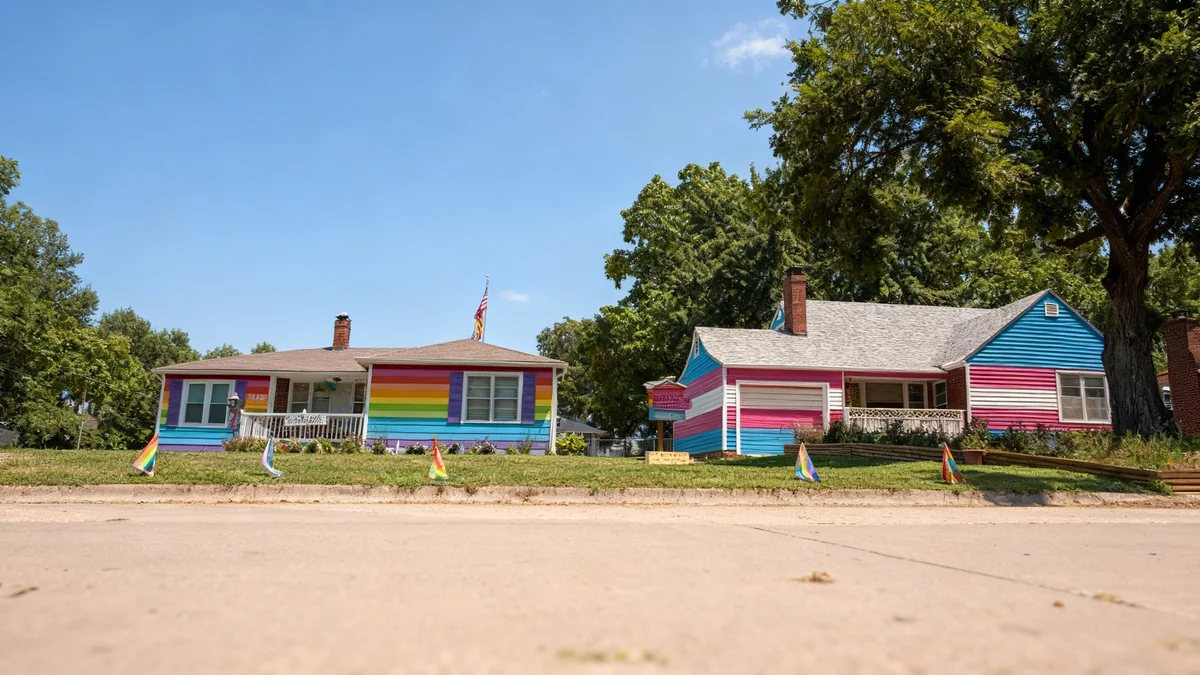A handcrafted sculpture representing a traditional ritual art form from Kerala was recently presented to Prime Minister Narendra Modi. The piece, a Bhairava Theyyam sculpture, was a gift from Kerala Chief Minister Pinarayi Vijayan during a meeting in New Delhi. The artwork was created by 54-year-old artisan Sundaresan VP from Kannur, who works at the state-run Crafts Village in Iringal.
Key Takeaways
- Kerala's Chief Minister gifted a Bhairava Theyyam sculpture to Prime Minister Narendra Modi.
- The piece was made by artist Sundaresan VP from Kannur, a specialist in traditional folk art.
- Crafted from jackfruit wood, the 25-inch sculpture took over two months to complete.
- Theyyam is a centuries-old ritual performance art from the North Malabar region of Kerala.
- This is the second time Sundaresan's work has been chosen as a gift for a national leader.
A Gift Representing Cultural Heritage
When political leaders meet, the exchange of gifts often carries symbolic weight. The choice of a Bhairava Theyyam sculpture was a deliberate move to highlight the rich cultural tapestry of Kerala. Unlike a standard souvenir, this piece embodies a living tradition deeply rooted in the state's history and spiritual life.
The sculpture was selected by government officials from a collection at the Iringal Crafts Village, where Sundaresan is an artist. "It was a government requirement," Sundaresan stated. "We have a large collection of Theyyam sculptures here, and they selected one from it." The choice underscores a growing appreciation for authentic, handcrafted art in official diplomacy.
Sculpture Specifications
- Material: Jackfruit tree wood
- Height: 25 inches
- Weight: Approximately 8 kilograms
- Creation Time: Over two months
The Artist and His Craft
Sundaresan VP is a 54-year-old artist from Payyanur in the Kannur district, an area where Theyyam is an integral part of community life. His connection to the art form is not just professional but deeply personal. He grew up surrounded by the rituals, stories, and craftsmanship associated with Theyyam.
"My family and friends were all involved in the art. I naturally picked it up from them," he explained. After completing his formal education, he decided to dedicate his life to preserving this unique folk art through sculpture. His work is a testament to a lifetime of observation and inherited skill.
A Meticulous Process
Creating the Bhairava Theyyam sculpture was a labor-intensive process that took more than two months. Sundaresan handled every stage himself, from carving the solid block of jackfruit wood to applying the intricate paintwork. Each detail, from the facial expression to the ornamental patterns, required immense patience and precision.
"The detailing on Bhairava Theyyam is very intricate, and the paintwork demands a lot of focus," Sundaresan noted.
The final piece is not just a static object but a representation of a dynamic performance. The colors and forms are designed to evoke the energy and divine presence that characterize a live Theyyam ritual.
What is Theyyam?
Theyyam is a vibrant and sacred ritual performance art practiced for centuries in the North Malabar region of Kerala. It is a complex tradition that combines dance, music, mime, and elaborate costumes. Performers, who come from specific communities, are believed to become conduits for the divine, embodying a deity for the duration of the ritual. There are between 400 and 500 different forms of Theyyam, each with its own distinct mythology, costume, and performance style.
The Significance of Bhairava
Among the hundreds of Theyyam forms, Bhairava holds a special significance. In Hindu mythology, Bhairava is a powerful and fierce manifestation of the god Shiva. This form represents the deity's destructive power, which is necessary to protect righteousness and vanquish evil. The Theyyam performance of Bhairava is visually stunning and emotionally charged, intended to inspire both awe and reverence.
Sundaresan's sculpture aims to capture this complex duality. It portrays the ferocity of the deity while also hinting at a divine serenity. "There’s something magnetic about the Bhairava Theyyam," Sundaresan said. "People always stop and take a second look at it. It has that commanding presence."
A Second National Recognition
This is not the first time Sundaresan's artistry has been recognized on a national stage. Previously, a sculpture he created of the Vishakandan Theyyam was gifted to Jagdeep Dhankhar during his tenure as Vice President. This repeat selection highlights the consistent quality and cultural authenticity of his work.
The request for the Bhairava sculpture came just days before the Chief Minister's meeting with the Prime Minister. According to Sundaresan, the officials were very specific in their request. "They even consulted Theyyam performers to confirm the details before finalising it," he recalled. This careful verification process ensures that the sculptures are accurate representations of the sacred art form.
Other Traditional Forms
While the Bhairava sculpture has gained recent attention, Sundaresan's portfolio is extensive. He also creates sculptures of other important Theyyam figures, including:
- Parassinikadavu Muthappan
- Bhagavathy Theyyam
- Bali Theyyam
- Ramayana Theyyam
Each piece requires months of work and a deep understanding of its mythological background. The artist also considers practical aspects, such as the weight of the sculpture, depending on the intended recipient. "If it’s being given to someone elderly, we make sure it’s not too heavy to hold," he added.
Bringing Folk Art to the Forefront
A sculpture of this quality, with its intensive labor and artistic skill, is valued between ₹1.5 and ₹2 lakh (approximately $1,800 to $2,400 USD). However, for Sundaresan, the true value lies beyond the monetary figure. He is pleased that the gift has brought wider attention to the art of Theyyam itself.
He remains humble about his role, supported by his wife, Valsala. He believes the recent focus is primarily because of the high-profile recipient. "I’ve been making Bhairava Theyyam for years," he said, "and I’m just happy more people are noticing the art now."
Through this diplomatic gesture, a piece of Kerala's soul, carved from wood and brought to life with color, now resides in the nation's capital, serving as a powerful reminder of India's diverse and profound cultural traditions.




